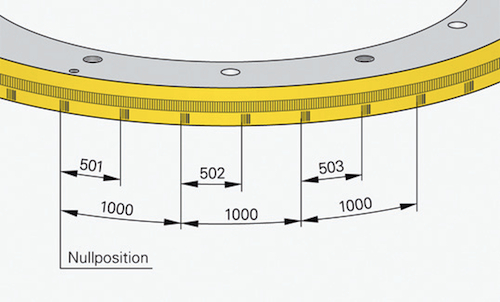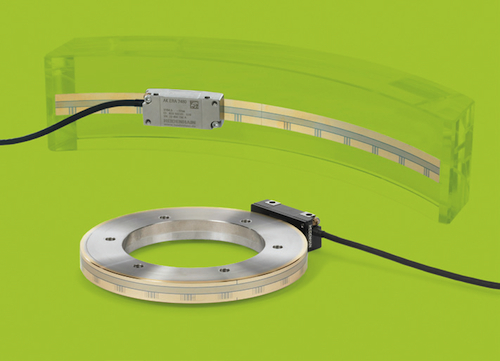When the Atacama Large Millimeter/Submillimeter Array (ALMA) observatory is completed in 2013, it will have 66 high-precision antennas working together at millimeter and submillimeter wavelengths. Today, 25 of the 66 antenna are equipped with Heidenhain angle encoders.

Here is a schematic representation of a circular graduation with distance coded reference marks. (ERA 4480 with 20,000 lines).
The antennas are interconnected to comprise a single telescope that is already capturing images from light years away. The exact positioning of the antennas is critical to obtaining clear images. The Heidenhain encoders are well suited for this application because of their precise instrumentation and ability to operate without contact at an altitude of 5,000 meters in the Atacama Desert in northern Chile.

ALMA will use 66 antennas that are precisely controlled and interconnected to form a giant telescope. Angle encoders from Heidenhain ensure the antennas are positioned precisely. (Photo credit: Jose Francisco Salgado)
To align the horizontal angle, the ALMA antennas use the incremental ERA 7480C angle encoder with 247,800 scale lines and a diameter of 3,155 millimeters. This encoder was specifically developed for the observatory. The angle encoders consist of a scanning unit and a one-piece scale tape as a graduation carrier.

The ERA 7480 encoder consists of a scanning unit and a one-piece steel scale tape as a graduation carrier. The ERA 4282C modular encoder consists of a scale drum and a compact scanning head.
The vertical angle was set by ALMA researchers who used the angle encoder. Its interface electronics adapt the encoder signals to other auxiliary electronics. The external EIB 749 interface box interpolates and compensates the output signals from the scanning head, and position values are output through Ethernet to the antenna’s control computer. HEIDENHAIN http://www.heidenhain.com/
Filed Under: Aerospace + defense, Encoders • optical, ELECTRONICS • ELECTRICAL





Tell Us What You Think!